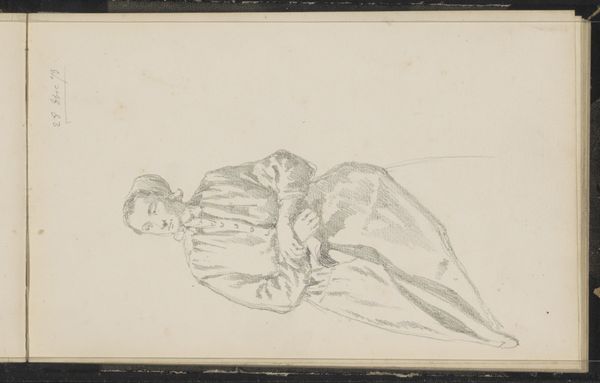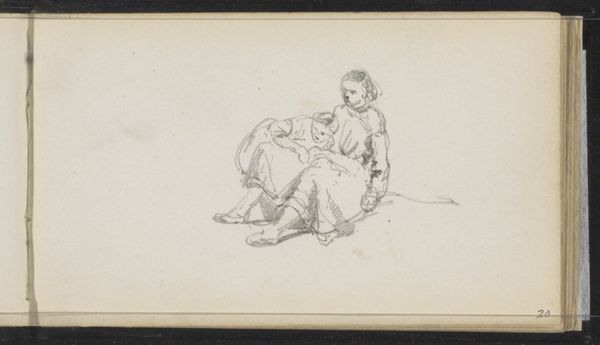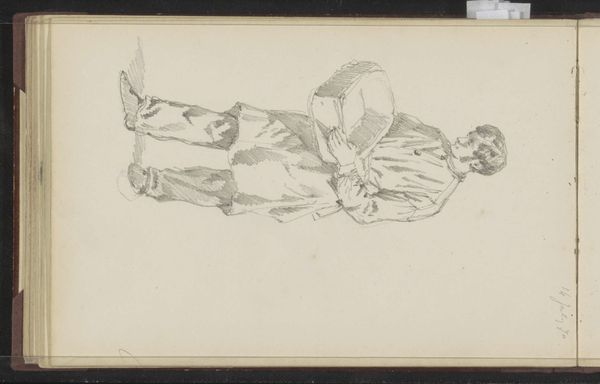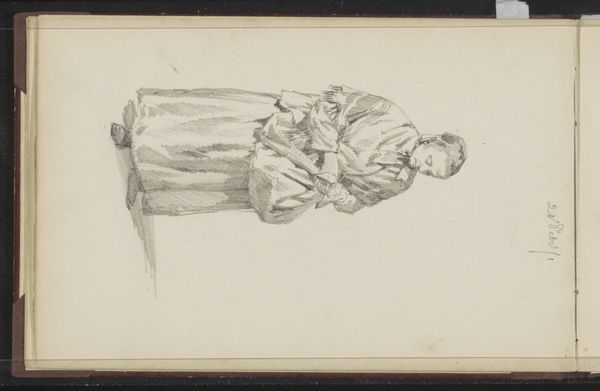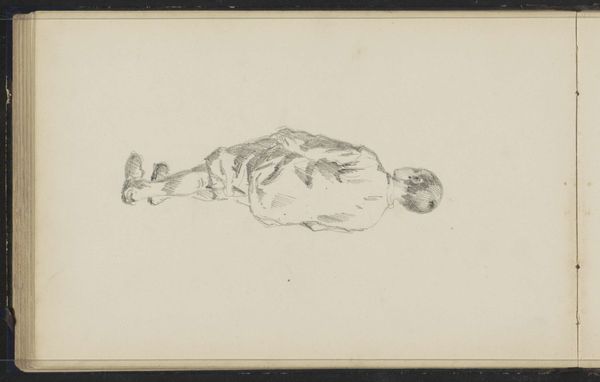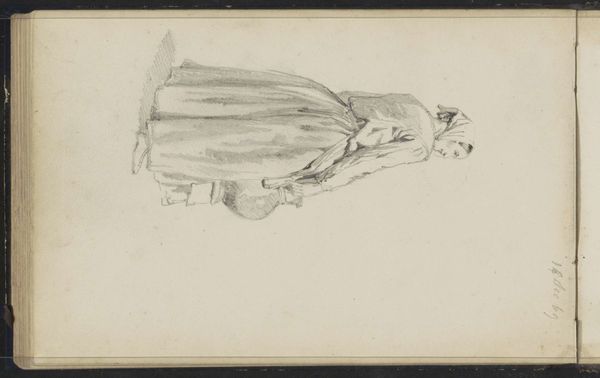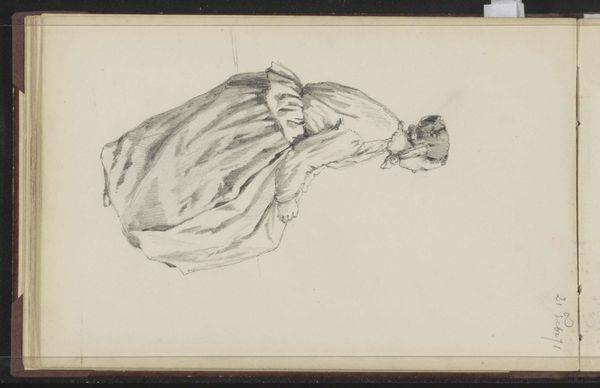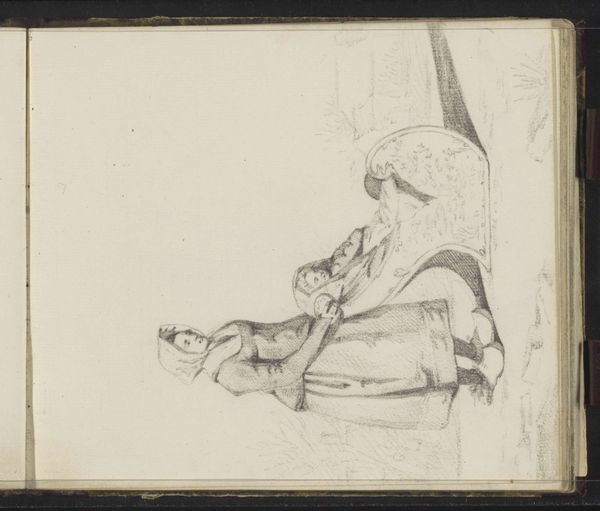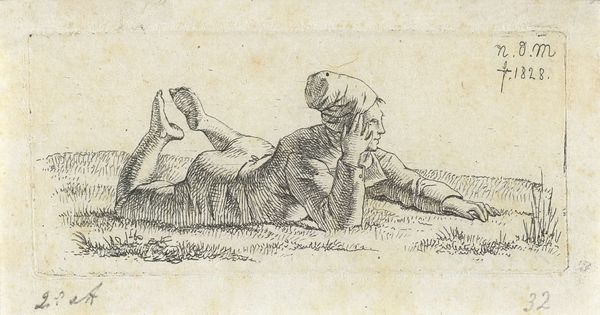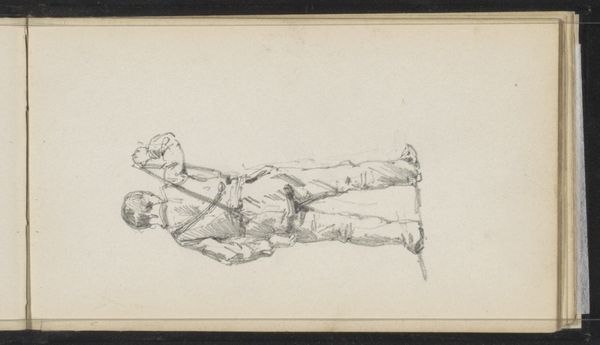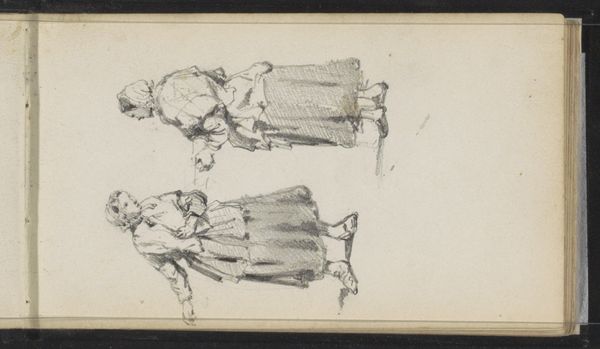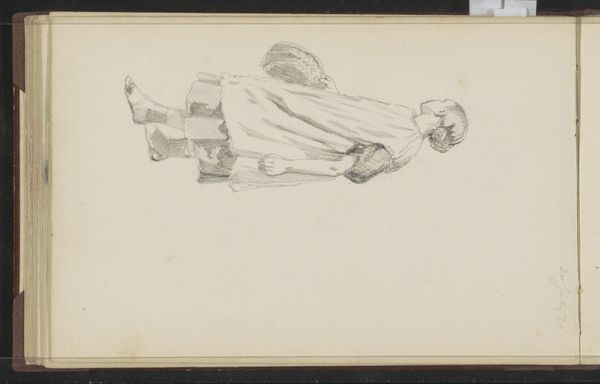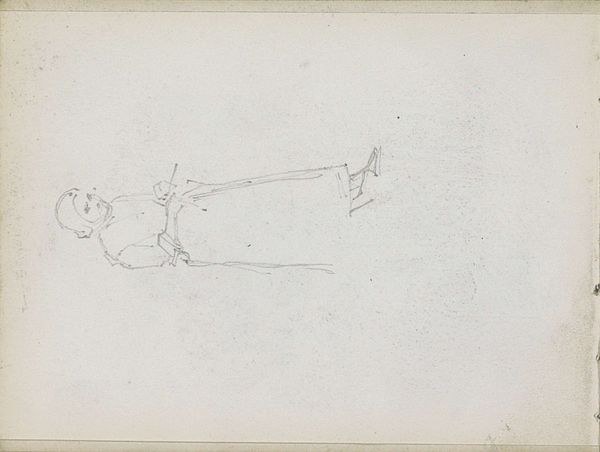
drawing, pencil
#
portrait
#
drawing
#
pencil
#
genre-painting
Copyright: Rijks Museum: Open Domain
Curator: Welcome to the Rijksmuseum. We're standing before a pencil drawing by Willem (II) Troost. It's called "Boerin met een hoofddoek en mand," which translates to "Peasant Woman with Headscarf and Basket," dating somewhere between 1822 and 1893. Editor: The first thing that strikes me is the drawing's economy of line. There's a wonderful lightness, almost a sense of the figure floating on the page despite the heavy fabrics implied by the shading. Curator: Yes, Troost masterfully uses the pencil to create a real sense of form and texture. Look at how the delicate strokes suggest the folds in her headscarf and the rough weave of her basket. Editor: What I find interesting is the almost anthropological gaze. Genre paintings of peasant life were a common subject, feeding into a certain romantic idea about rural simplicity. How do you see it fitting in with those tropes? Curator: Precisely, the composition speaks volumes. The downcast gaze, combined with the weight she seems to carry – both physical and symbolic – contribute to the broader visual discourse around the working classes in 19th century Netherlands. Her clothing is rendered very meticulously for instance. Editor: Absolutely, and it is important not to view such art in a vacuum, detached from its own societal biases. In these drawings, it's imperative that we reflect on not only what’s visible, but who chose what to be visible, and how the rendering influences broader perceptions. The almost fleeting quality of the drawing also seems to suggest some level of reality and immediate snapshot into everyday life. Curator: I appreciate you underscoring the critical nature of such reflections. Considering it purely through the formalism - texture and line and structure- is to elide key meaning and contexts. And it becomes particularly necessary when considering this piece within the scope of portraiture and the artist's entire practice. Editor: This has been quite illuminating, particularly in considering both artistic choices and historical context that shapes its viewing. Thank you. Curator: Indeed, considering an artwork on its own is never quite sufficient; rather, viewing with open mind that invites historical insight allows a richer, ultimately more thoughtful viewing.
Comments
No comments
Be the first to comment and join the conversation on the ultimate creative platform.
